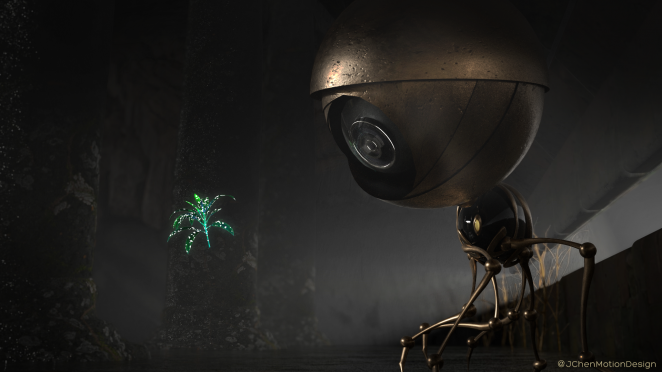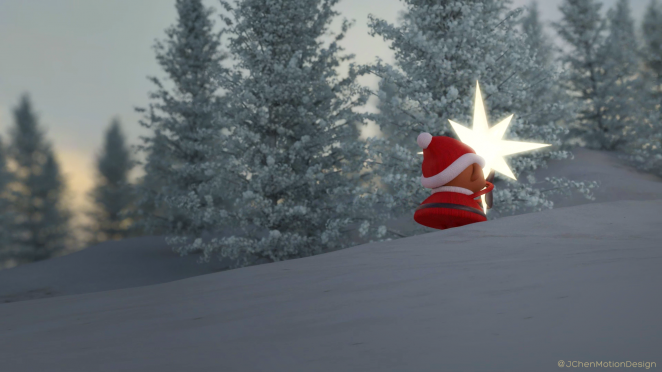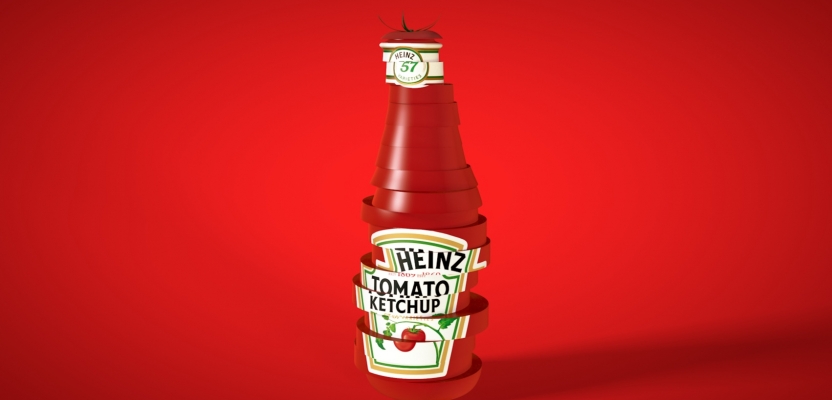Whoever has been in the industry for a long time knows that there is no fixed way to perform tasks or achieve effective results. The story and creative process of Motion Graphics Designer Jonathan Chen demonstrate that quite well.
No matter the kind of inspiration that strikes Jonathan, his creative process can change in the blink of an eye, even incorporating extremely creative solutions like using a mirror to take a wider shot of a cramped room. Jonathan definitely possesses some adaptability and incredible problem solving skills – and by reading his story, we can see where all of that originated from.
For this Member Spotlight, we are learning more about Jonathan's story, style and creative process, as well as what it means to work in public sector communications.

How did you get into the industry?
At University, my karate sensei Mark Caddy owned an IT company. He took me on over the summer break and part time during term time creating websites and promotional Flash animations. Whilst I no longer design websites, and gone are the Flash heydays I definitely appreciate this first experience working with clients on creative projects.
Where are you based now and who do you work for?
I am based in London and am currently in public sector communications creating motion graphics for social media content. The subjects can be heavy and challenging with topics like domestic abuse, FGM (female genital mutilation) and child abuse, but it’s rewarding to hear how the work is helping victims.
If you weren’t in your current industry, what would you be doing?
As a kid, before I had access to industry motion programs I used to dig around in the game making software Klik & Play. It was glitchy and crashed often but that’s where I first made digital animations. The software also taught me basic programming which are foundations to logic skills I use with After Effects Expressions and Cinema 4D Xpresso coding. It’s incredibly satisfying when the code all comes together, so if I didn’t work in the creative industry I would have likely gone down the programming path.

Can you explain your creative process?
My exact process will differ across projects however I always start by jotting notes and scribbling designs with pen and notepad. As much as I like my iPad and Apple Pencil I just prefer doodling on actual paper. Research is important too especially if it’s a new topic, even if it’s just to gain some style inspiration.
Storyboards are helpful to start visualising and organising sequences, but they’re usually still very crude at this stage. For client work I mock up the storyboards in Photoshop so people can actually make sense of my scribbles. I may develop one scene, element or character further to help them visualise the entire timeline.
Illustrator is my go-to program for vectors. I find the vector tools within After Effects and Cinema 4D a bit cumbersome for even simplistic tasks.
For 3D projects there’s an iterative cycle of blocking out motion sequences in Cinema 4D followed by editing low resolution previews in Premiere to ensure the scenes flow. Final 3D renders are composited in After Effects to enhance colours, apply depth of field, motion blur and other additional effects.

How would you describe your style?
My design style changes depending on what I’m doing. Sometimes it might be in reaction to some inspiration. I try to ensure there is flow and fluidity with my motion designs. Interestingly I’ve had comments about my inline skating influencing my animations. Additional observations from others include a “quirky humour” with storytelling.
Which individuals do you gain inspiration from? Do you have any heroes in the industry?
Like most motion designers, I’ve got to shout Andrew Kramer as I have learnt so much from his free resources which are also really entertaining. On top of that it’s been great to watch his own creative journey. I also really like the title sequence design work of Arisu Kashiwagi. Any good motion design work should be able to stand strong as static pieces and her work certainly does this.
How has technology affected the way you work?
I was impressed with the latest iteration of Roto Brush Tool in After Effects to rotoscope, a task of cutting out moving objects from videos that traditionally takes a long time but this new tool uses artificial intelligence to assist. Whilst the tool is not perfect it has helped me with some tricky shots and I am excited to see how AI technology can improve and bring about new opportunities for artists in the future.
What’s your secret to staying inspired and motivated?
I think it’s important to keep an open mind and be willing to try new things.

What’s the work achievement you’re most proud of?
I’m incredibly happy with my project Tzao’s Puzzle, a short film which incorporates video, 3D animation and compositing. I was selected as a finalist with this project for the Enter The World of Hans Zimmer competition where the task was to create a music video to one of Zimmer’s iconic scores.
I’m particularly proud of this work because I turned this all around in six weeks, jumping through many hoops and overcoming countless hurdles. This was also the first project I used Redshift renderer and with over fifty 3D shots it forced me to learn a lot of new technical features quickly.
I used camera mapping for the first time too, a procedure which projects a photo onto your 3D model. This gives 2D photos a sense of 3D parallax and depth. It was great to be able to use photos I took a couple of years ago on a hike in the Dolomites in Italy. I always find it great to take photos as you never know when you may rely on them again!
One of the rules of the competition was that the audio must not be edited in any way. This initially was a puzzling requirement as the audio provided was a live recording of The Da Vinci Code which included random audience applause at the end. My solution was to include a retro television which featured vintage footage of people clapping. I took advantage of this new 3D prop to enhance the visual theme of exploration and to help build some backstory. Sometimes interesting creative routes can come about through constraints!
Another issue I ran into was that the camera I borrowed only came with one fixed lens. It wasn’t an issue for most scenes which consisted of close-ups. However, I wanted one wider establishing shot but due to the limited space of my room I could not get far back enough to get the shot. I overcame this problem by using a mirror angled at 45 degrees. I aimed my lens at this mirror allowing me to set my camera back another few feet!
Overall, this was a fantastic project to work on, which encompasses a variety of disciplines that pushed my creative abilities and problem-solving skills.
How do you recharge away from the office?
I like to keep active. Skating, running and obstacle racing are my main escapisms from the desk. I always enjoy creative pastimes, drawing and cooking are among my favourite activities. Always fun when you can fuse hobbies together, like in this skate, obstacle mograph mash up.

What is one tip that you would give to other aspiring creatives looking for work?
Make sure your portfolio includes the type of work you want to do. If you don’t have any commercial examples then personal projects should show off your capabilities.
What’s your one big hope for the future of the industry?
That opportunities continues to rise and talented creatives can do what they love to do.
If you could change one thing about the industry, what would that be?
Universal acknowledgment that creatives should always be paid for their time. “It will look good for your portfolio,” is not a form of payment even if you’re new to the industry!

Do you have any websites, books or resources you would recommend?
The standard creative sites like Creativepool, Behance and Pinterest are always great. As for most motion designers VideoCopilot is just an amazing resource. AEScripts is a fantastic platform for After Effects add-ons (careful you don’t fall down the rabbit hole of purchasing everything) plus inspiration. BattleAxe has some great tools including Overlord for a better bridge between Illustrator and After Effects.
fxphd, GreyscaleGorilla, CG Shortcuts and ThePixelLab has been brilliant for the 3D side of things.
I pick up my LogoLounge book frequently, it’s a good starting point to see what is already out there.
I always find Carl Warner’s Food Landscapes fascinating as he takes amazing photographs of landscapes made from all sorts of food like bread, cheese and fish. He brings new meaning to ‘playing with your food!’
I really like pop up books too. Great to enjoy in their initial presentation and I’m always bewildered by its technical craft with how movement can be created from the constraints of their pages. The Very Hungry Caterpillar and Marion Bataille’s ABC3D are two of my favourites with great execution of various design principles.






